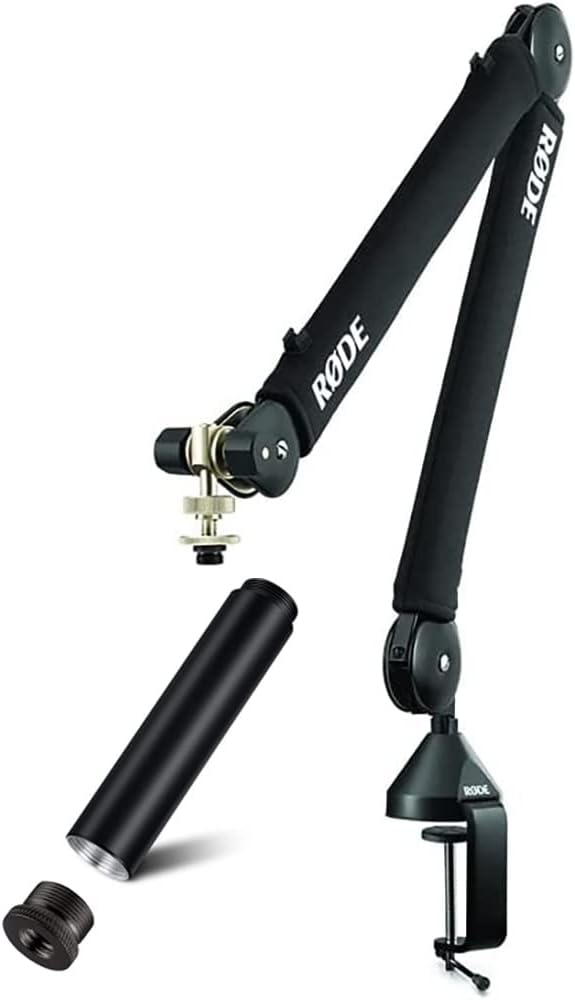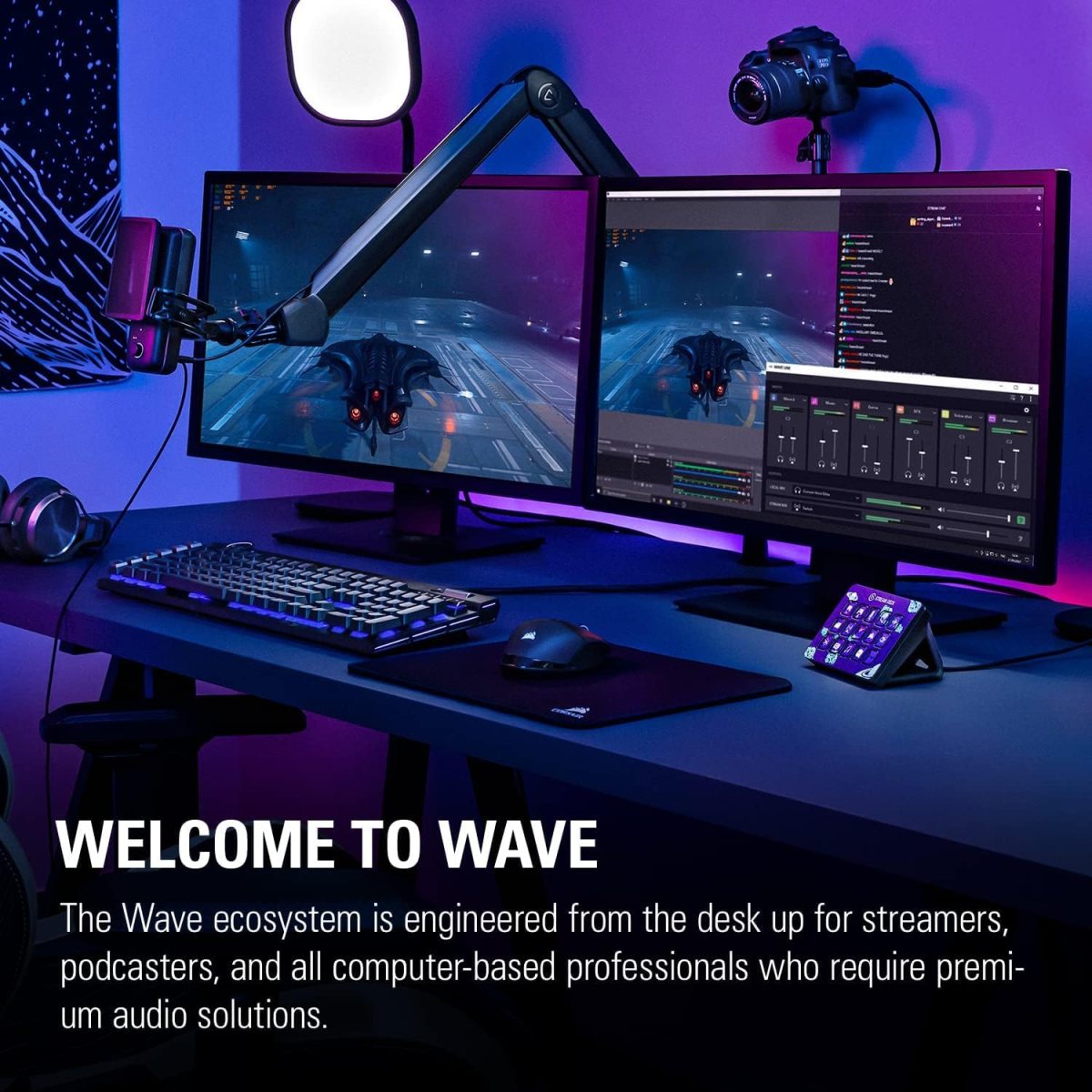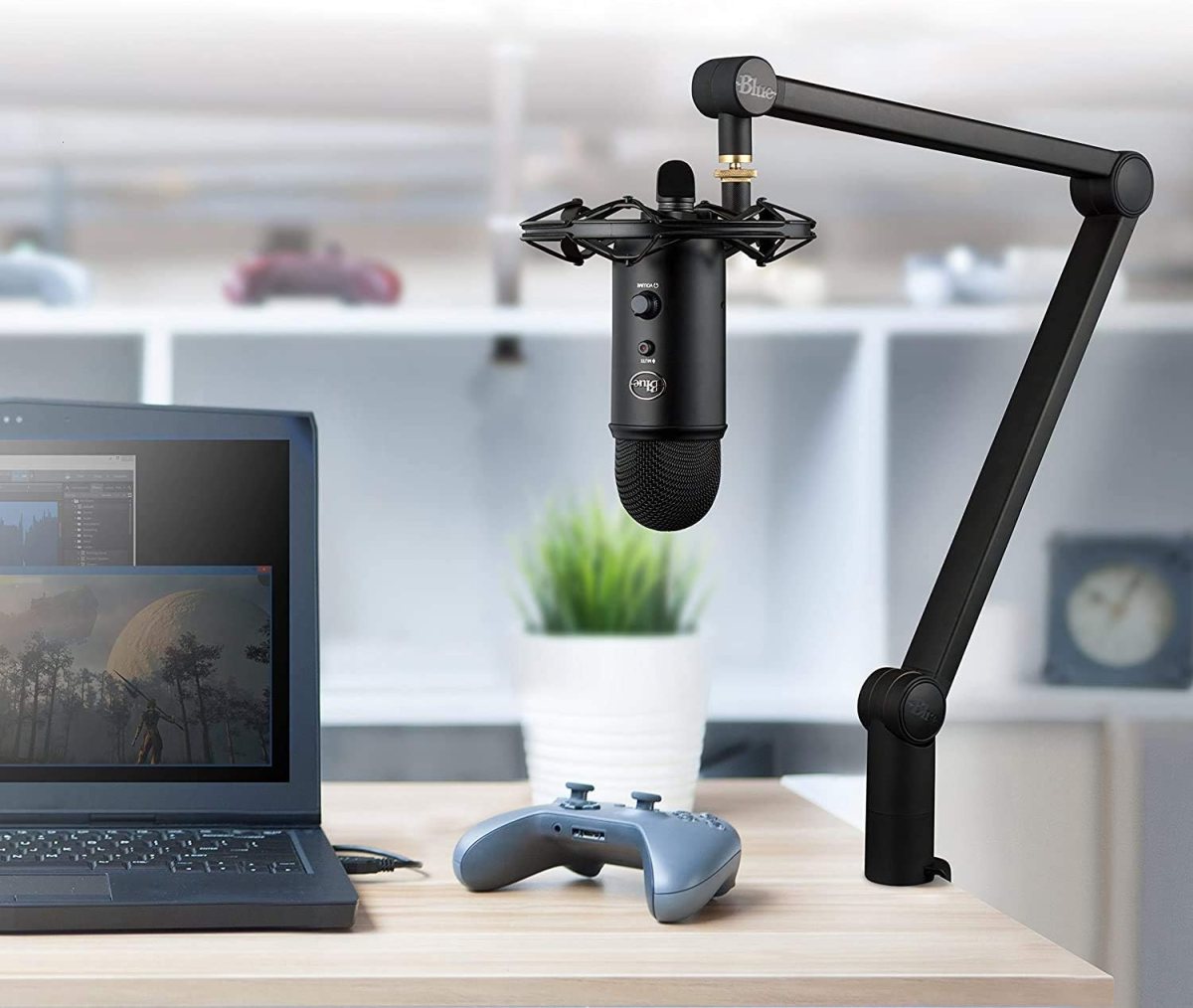Microphones are the most necessary piece of equipment for any podcasting project. No matter, if you are creating a home studio or podcasting with your students in the classroom, a good microphone, is key to having good-quality audio. After your microphone is selected and purchased, what comes next? For many podcasters, they try to figure out a way to declutter their workspace. This is usually accomplished with a Microphone Boom Arm, a device that holds your microphone in place and usually helps to keep your desk area free and clear of unwanted recording debris.
But what Microphone Boom Arm is the best one for you and your audio setup?
Should you use one that sits high and holds the microphone in place using springs or should you choose an under-arm boom arm that allows the camera to see more of your face?
In this post, we are going to look at the most popular microphone boom arms on the market and help you determine what solutions will work for your audio or video podcasting project. At the end of the post, I will share with you my recommendations and let you know what my studio setup at home looks like.
In this post, we are going to look at the most popular microphone boom arms on the market and help you determine what solutions will work for your audio or video podcasting project. At the end of the post, I will share with you my recommendations and let you know what my studio setup at home looks like.
Let's take a look at three popular brands of microphone boom arms:
RODE Boom Arms
In the world of content creation, capturing clean and crisp audio is paramount. For microphone users, a quality boom arm becomes an essential tool. They not only free up desk space but also allow for precise microphone positioning, leading to optimal audio capture. RODE, a trusted name in audio equipment, offers two popular microphone boom arm options: the RODE PSA and the PSA1+. While both models share the RODE reputation for durability, they cater to slightly different needs and budgets. This review will delve into the strengths and weaknesses of each model, helping you decide which RODE boom arm is the perfect fit for your recording setup.
RODE PSA1+ Professional Studio Boom Arm
The RODE PSA1+ is a premium microphone boom arm designed for content creators, podcasters, and broadcasters. It boasts a robust build quality, exceptional adjustability, and silent operation, making it a strong contender for the title of best-in-class mic stand.
Pros:
- Smooth and Silent Operation: The RODE PSA1+ utilizes an innovative parallelogram spring design that provides exceptionally smooth and quiet operation. This is particularly crucial for recording environments where even slight microphone bumps can translate into unwanted noise in the final product.
- Superior Adjustability: The fully adjustable arms with 360-degree rotation allow for precise microphone placement, ensuring optimal audio capture. This increased flexibility is a boon for users who require frequent microphone repositioning during recording sessions.
- Durable Construction: The PSA1+ is built to last, featuring a steel construction with a neoprene sleeve for protection. This combination offers both strength and a touch of noise-dampening. It’s rated to support microphones up to 2.6 pounds, making it compatible with a wide range of popular condenser microphones.
- Integrated Cable Management: The PSA1+ features integrated cable management channels that help to keep your recording setup organized and free of cable clutter. This not only improves aesthetics but also reduces the potential for tangled cables to snag or create unwanted noise.
Cons:
- Cost: The RODE PSA1+ is a premium product with a price tag to match. There are more affordable microphone boom arms available, though they may lack the same level of adjustability, noise cancellation, or build quality.
- Desk Space: Due to its size and reach, the PSA1+ can occupy a significant amount of desk space. Those with smaller workspaces may want to consider a more compact boom arm option.
RODE PSA1+ Overall Review
The RODE PSA1+ is a professional-grade microphone boom arm that offers exceptional performance, adjustability, and durability. While the price point may be a barrier for some users, content creators who prioritize quality audio and a streamlined recording setup will find the PSA1+ to be a worthwhile investment.
The RODE PSA and PSA1+ are both popular microphone boom arms from a trusted brand, but they cater to slightly different needs. Here's a breakdown of their pros and cons to help you decide which one is right for you.
RODE PSA1: The Value Option
When it comes to podcasting, streaming, or any professional audio recording, the quality of your microphone boom arm can make a significant difference. The RODE PSA microphone boom arm stands out as a robust and versatile solution for content creators.
Build Quality and Design
The RODE PSA1 boom arm is praised for its sturdy construction and reliable performance. It offers a strong desk clamp that ensures stability, even when holding heavier microphones. The arm's reach and flexibility are commendable, allowing for easy adjustments whether you're sitting or standing. Its smooth, full 360-degree rotation and dual-axis swivel mount provide precise microphone placement, which is essential for capturing clear audio.
Ease of Use
Setting up the RODE PSA1 is straightforward, with two desk mounting options: a desk clamp for temporary setups and a desk insert for a more permanent solution. The boom arm is compatible with a wide range of microphones, especially RODE models, but it can also accommodate other brands with the use of a thread adapter.
Performance
Users report near-silent operation, with the boom arm's movements not interfering with audio quality. This is particularly important for recording environments that demand minimal background noise. The inclusion of fully damped springs in the design helps in achieving this quiet operation.
Versatility
The RODE PSA1 boom arm is not just for podcasters. It's also a great tool for gamers, voice-over artists, and live streamers. Its ability to hold the microphone at the desired position without drifting is a feature that any audio enthusiast will appreciate.
Final Thoughts
The RODE PSA1 microphone boom arm is a solid investment for anyone serious about their audio recording setup. While it may not be the cheapest option on the market, its build quality, functionality, and ease of use justify the price. It's a product that not only meets expectations but often exceeds them, making it a top choice for content creators looking for reliability and performance.
Pros:
- Affordable: The PSA is a significantly cheaper option compared to the PSA1+. This makes it a great choice for budget-conscious creators or those just starting out.
- Solid Construction: Despite the lower price, the PSA boasts a sturdy steel build that can hold microphones weighing up to 2kg (4.4lbs).
- Functional Design: It offers a good range of adjustability with 180-degree swivel and internal cable management.
Cons:
- Noisier Operation: Compared to the PSA1+, the PSA's spring system can introduce slight noise during adjustments. This might be a concern for very sensitive recording environments.
- Less Flexible: The PSA has a more limited range of motion compared to the PSA1+. It lacks the full 360-degree rotation and may not be as suitable for complex microphone positioning.
- Bulkier Design: While still functional, the PSA has a slightly bulkier design aesthetic compared to the sleeker PSA1+.
Choosing Between Them:
If you're on a tight budget and prioritize basic functionality, the PSA is a solid option. However, for professional recordings or situations where microphone noise is a concern, the PSA1+'s silent operation and superior adjustability are worth the extra investment.
Elgato Boom Arms
Elgato, a brand synonymous with high-quality streaming peripherals, offers two microphone boom arms – the Elgato Wave Mic Arm and the Low Profile Mic Arm. While both elevate your setup by freeing up desk space and enabling optimal microphone placement, they cater to distinct needs. Let's delve deeper into their features, strengths, and ideal applications to help you pick the Elgato boom arm that best complements your streaming haven.
Elgato Wave Mic Arm: A Streamer's Dream
The Elgato Wave Mic Arm exudes a sense of premium quality right out of the box. Its robust metal chassis and clamp inspire confidence, ensuring it can handle even heavier condenser microphones (up to 2kg/4.4lbs). This is particularly crucial for streamers who might use mics with integrated XLR adapters or heavier dynamic mics.
The Elgato Wave Mic Arm truly shines in its reach and adjustability. A generous range of motion allows for versatile microphone placement, ensuring you capture your voice perfectly whether you're sitting upright or leaning back in your chair during intense gameplay sessions. This makes it a great choice for streamers with larger desks who require the flexibility to position the microphone exactly where they need it. Elgato doesn't forget aesthetics either. The Elgato Wave Mic Arm boasts a sleek, minimalist design that seamlessly integrates with other Elgato products, fostering a cohesive and visually appealing streaming setup.
However, the Wave Mic Arm's premium features come at a premium price. It's more expensive compared to the Low Profile Mic Arm and some competitor offerings. Additionally, due to its generous reach and adjustability, the Wave Mic Arm has a larger footprint and might not be ideal for those with limited desk space.
Elgato Low Profile Mic Arm
If you're a streamer or content creator working with a compact workspace, the Elgato Wave Mic Arm LP might be your perfect match. As the name suggests, this boom arm sits closer to your desk, freeing up valuable real estate for other essential streaming equipment. This makes it ideal for minimalist setups or those with smaller desks. Elgato listened to user feedback and significantly improved the cable management system. Stronger magnetic cable management covers ensure your microphone cable stays hidden and out of sight, maintaining a clean aesthetic.
The Elgato Wave Mic Arm LP is also a more budget-friendly option compared to the Elgato Wave Mic Arm. This makes it a great choice for streamers who are just starting or working with tighter budgets. However, keep in mind that the Low Profile Mic Arm has a shorter reach and less articulation than the Wave Mic Arm. This might be limiting for larger desks or complex microphone positioning needs. The weight capacity is also lower at 1kg (2.2lbs), so it's important to ensure compatibility with your microphone before purchasing.
The Final Verdict: Streamlining vs. Extensive Control
Both Elgato boom arms are well-made and significantly improve your audio setup by keeping your microphone out of the way and enabling optimal placement. The Wave Mic Arm is the clear choice for streamers with larger desks who prioritize extensive reach, premium build quality, and a clean aesthetic. On the other hand, the Low Profile Mic Arm excels in space-saving efficiency with its compact design and more affordable price tag. Ultimately, the best Elgato boom arm boils down to your workspace limitations, microphone weight, and budget.
Blue Microphones Compass Premium Broadcast Boom Arm
When. started podcasting in 2011, my first microphone was the BLUE Yeti. The Yeti is a tremendous microphone and now comes in several colors and styles to fit your audio recording needs and budget. In fact, if you check out my recent YouTube videos, you can see that I still have it displayed behind me in the camera shot. The Yeti microphone is one that I would recommend for both studio podcasters starting out and classroom podcasting setups because you can use one microphone to record a number of audio sources. For example, if you have several students around a table, the Yeti is a great solution because it will equally record students no matter where they are positioned.
To accompany the Yeti microphone is the Blue Microphones Compass Premium Tube-Style Microphone Broadcast Boom Arm. This lightweight, yet very sturdy boom arm is simple to put together and holds your Yeti microphone in place over your recording desk so that it doesn't pick up any unwanted noises or finger-tapping on the desk. This is PERFECT for use in the classroom.
Best Microphone Boom Arm – My Overall Recommendation
Over the last decade, I have had the opportunity to purchase and test out several microphone boom arms, many of which were not mentioned and reviewed in this post such as the Blue Compass, FiFine, and Heil boom arms. Overall, my recommendation for anyone looking for a new way to hold their microphone in place is to first start with your budget. If the equipment is too much for your bank, it is probably not the right choice for you. Next, take a look at the microphone that you are using. I started my podcasting career using the BLUE Yeti Microphone, if this is your microphone of choice then I would recommend using the boom arm that Logitech offers.
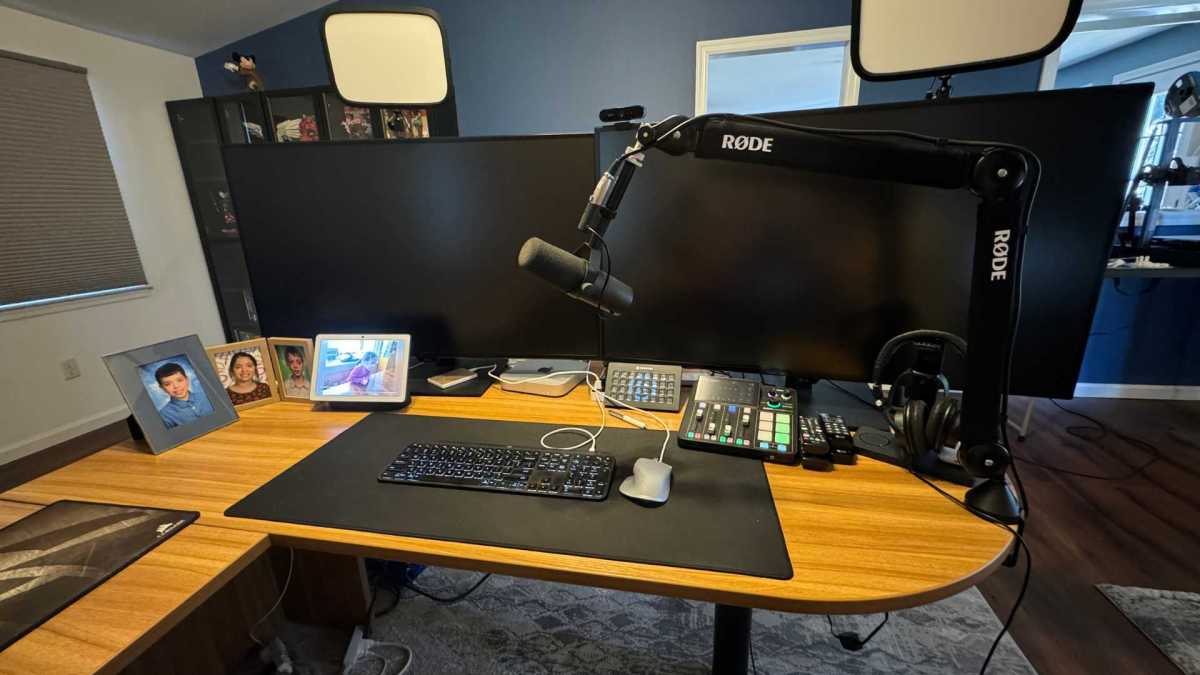
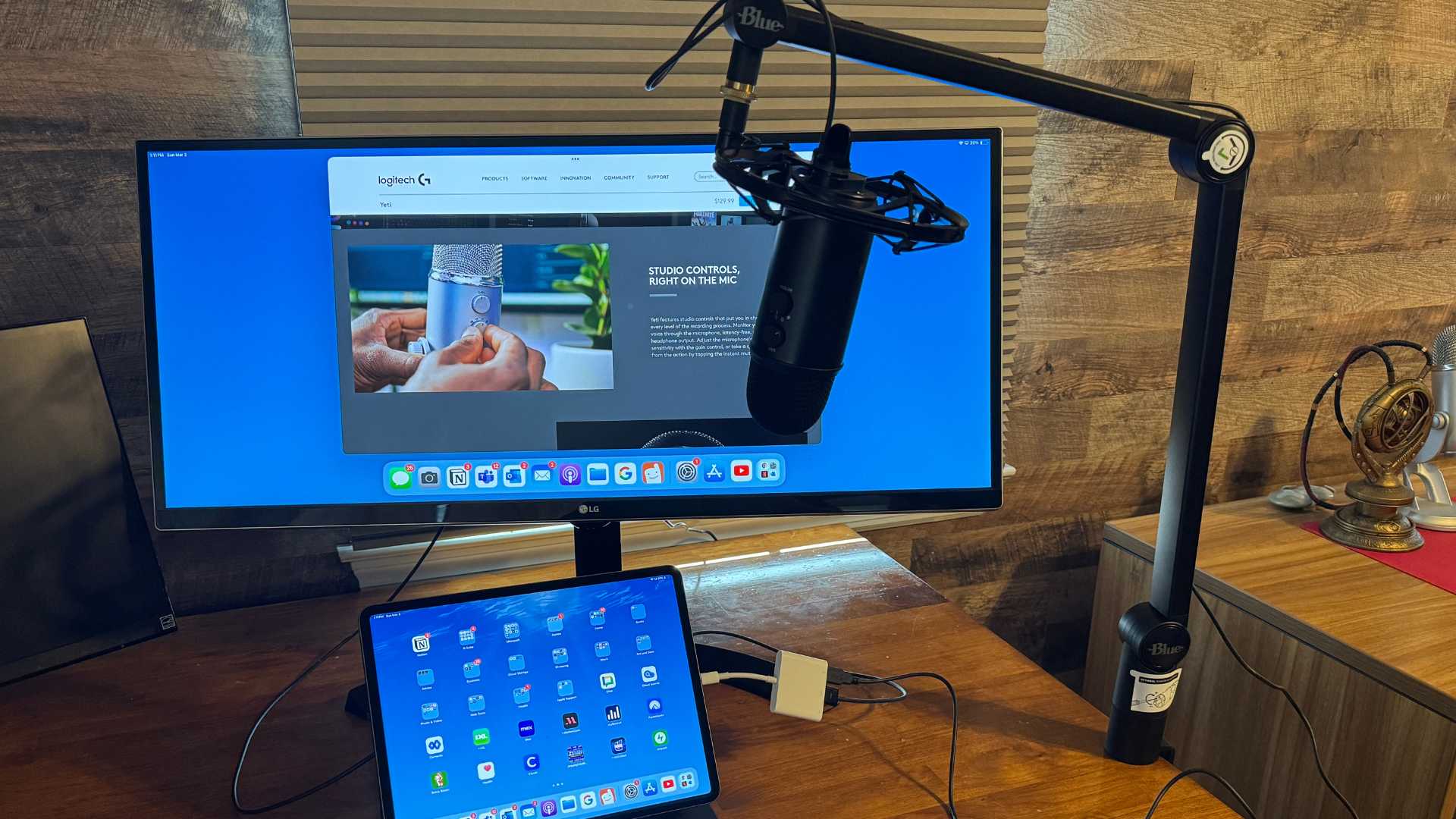
Currently, I am using the RODE PSA1+ in my setup. The biggest reason for this is that it securely holds up my Shure SM7B microphone without much sagging. For my second recording station, the one primarily used by my EduTriplets, I have chosen to use the Blue Yeti Microphone and the Blue Microphones Compass Broadcast Boom Arm.
If you have a recommendation for audio equipment that hasn't been mentioned here, please hit the comment button below and let me know what you are using in your studio or classroom.
For more information, please visit these TeacherCast pages today!
Happy Recording!
Please Like, Subscribe, Follow … and Share!
Subscribe to my Newsletter
Social Media
Audio Podcasts
Contact Me
- Email: feedback@teachercast.net
- Contact Page: TeacherCast.net/Contact
Let's Chat
- Visit My Bookings Page
- Professional Development
- Invite me to your school, conference, or company for a professional learning opportunity, featured speaker role, or keynote speech
- Smore: The Ultimate Tool for Educators' Newsletters and Communication - August 28, 2024
- Google Keep for Instructional Coaches: Building an Effective Short-Term Memory System To Help You Stay Focused and Organized - July 29, 2024
- Empowering Neurodiverse Learners: SMART Technologies’ Innovative Edtech Solutions - July 17, 2024



